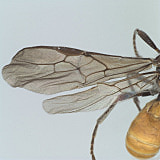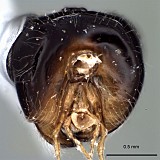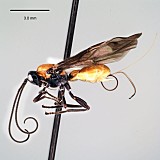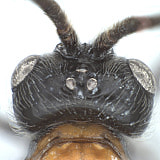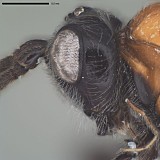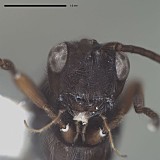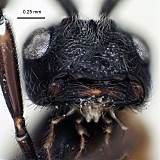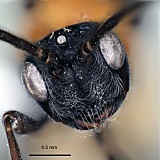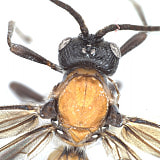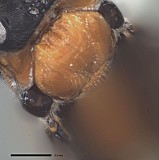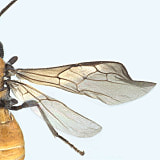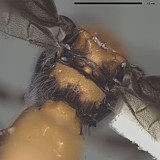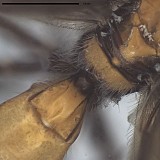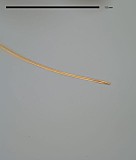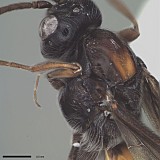Doryctobracon anneae Wharton, 2013
There is variation in the color pattern among the specimens available for study and although they were reared from two different host plants, specimens from Dahlia imperialis exhibited the maximum extent of variation (compare Figs 1 and 15 in the description section). Ten percent of the specimens, representing two males and one female, all reared from Dahlia imperialis, have a dark mesoscutum while all others are completely pale. Two specimens, also from D. imperalis, have the mesosoma ventrally much less extensively dark, with the tegula only partially brown.
Holotype: Female, deposited in UNAM.
Species of Doryctobracon most closely resemble those species of Diachasmimorpha Viereck with reduced occipital carinae but differ primarily in the position of fore wing m-cu, the larger tegula, and the elevated posterior margin of the pronotum dorsally. Fischer (1977) and Wharton (1997) provide redescriptions of Doryctobracon. Wharton and Marsh (1978), Fischer (1977), and Wharton and Yoder (2013: Parasitoids of fruit-infesting Tephritidae, www.paroffit.org ).
The apex of the ovipositor is narrower in D. anneae relative to species such as D. crawfordi, which may indicate an earlier host stage attacked but may also be a reflection of the differences in host habitat (flower head vs. fruit).
There are no specimens currently determined for this OTU, or those specimens determined for this OTU are not yet mappable.
MEXICO: Morelos
Lago de Zempoala
23–25.ix.1991
A. L. Norrbom, #57
Second label:
reared ex. capitulae
Dahlia imperialis
Roezl. (91M16)
Third label: reared ex puparium
Gymnocarena mexicana
(Tephritidae)
This material is based upon work supported by the National Science Foundation under Grant Numbers DEB 0949027 and DEB 0328922 with REU supplement 1313933.
Any opinions, findings, and conclusions or recommendations expressed in this material are those of the author(s) and do not necessarily reflect the views of the National Science Foundation.

